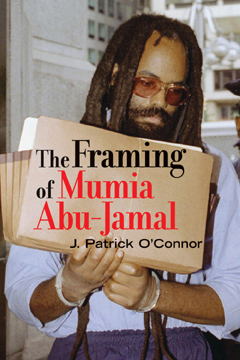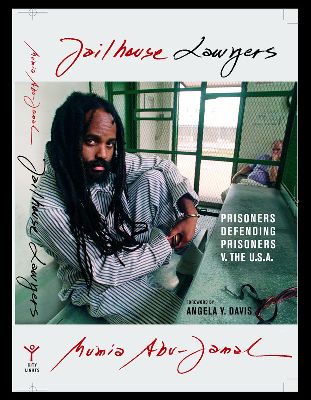Commentary :: Civil & Human Rights
Mumia Abu-Jamal’s Last Chance for Justice


In solidarity with similar events around the US, there will be an event celebrating the release of death-row journalist Mumia Abu-Jamal's new book: The Cork Gallery / 4th Floor North (Buzzer #9) / 302 E. Federal (at Guilford) / Baltimore, MD 21202
By J. Patrick O’Connor
Since his conviction in 1982 for the murder of Philadelphia Police Officer Daniel Faulkner, Mumia Abu-Jamal, through his numerous books, essays and radio commentaries, has become the face of the anti-death penalty movement in the United States and an international cause célèbre. Paris, for example, made him an honorary citizen in 2003, bestowing the honor for the first time since Pablo Picasso received it in 1971.
Abu-Jamal’s case has been politically charged from the beginning. As Amnesty International established in its 2000 pamphlet entitled “The Case of Mumia Abu-Jamal: A Life in the Balance,” his tortuous appeal process has been fraught with “judicial machinations.” Claims that won the day in other cases were repeatedly denied him, first by the Pennsylvania Supreme Court in 1989 and subsequently by a Federal District Court in 2001 where the judge overturned his death sentence but left in place in his conviction – and Abu-Jamal on death row – pending further appeals.
The latest example of what has become known as “the Mumia exception” occurred in March of 2008 when the U.S. Court of Appeals for the Third Circuit, in a sharply divided 2-1 decision, turned down Abu-Jamal’s appeal for a new trial based on the claim that the prosecutor – through his use of peremptory challenges – purged otherwise qualified blacks from his jury. In 1986, the U.S. Supreme Court handed down its landmark Batson decision, ruling that racial discrimination in jury selection is unconstitutional and merits the harmed defendant a new trial.
In a nutshell, the Third Circuit majority denied Abu-Jamal’s Batson claim on a technicality of its own invention, not on its merits, ruling that his claim failed because he was not able to establish the racial composition of the entire jury pool at his 1982 trial. In issuing its ruling, the court, incredibly, ignored its own previous opposite rulings in the Holloway v. Horn in 2004 and Brinson v. Vaughn in 2005 where it specifically ruled it was not required for the defendants in those cases to establish such data.
Abu-Jamal’s final opportunity for judicial relief is now before the U.S. Supreme Court in the form of a Petition for a Writ of Certiorari. On February 4, the high court docketed and accepted that filing. According to Abu-Jamal’s lead attorney, Robert Bryan of San Francisco, “The central issue in this case is racism in jury selection. The prosecution systematically removed people from sitting on the trial jury purely because of the color of their skin, that is, being black.”
Joseph McGill, the prosecutor at Abu-Jamal’s trial, has stipulated in previous appeal proceedings that he used 10 of the 15 peremptory challenges he exercised to exclude blacks from the jury – a strike rate of 66.67 percent against potential black jurors. Such a high strike rate is in itself an extremely strong inference of discrimination. The result was that – in a city with a black population of over 40 percent in 1982 – only three of the 12 jurors impaneled were black. As Third Circuit Judge Thomas Ambro pointedly stated in his dissent, “It is my belief that the 66.67 percent strike rate, without reference to the total venire [jury pool], can stand on its own for the purpose of raising an inference of discrimination.”
During last year’s term, the U.S. Supreme Court expanded its 1986 Batson ruling to warrant a new trial if a minority defendant could show the inference of racial bias in the prosecutor’s peremptory exclusion of one juror. Under Batson, the defense needed to show an inference – i.e., a pattern – of racial bias in the overall jury selection process. Ironically, the Supreme Court’s 7-2 decision strengthening and expanding Batson’s reach was written by Justice Samuel Alito, most recently of the Third Circuit Court of Appeals.
As a result, there is something more than a remote possibility that the Supreme Court will agree to grant Abu-Jamal’s writ. In denying Abu-Jamal’s Batson claim, the Third Circuit’s ruling created new law by placing new restrictions on a defendant’s ability to file a Batson claim. The Third Circuit, in effect, tampered with and undermined a long-established Supreme Court ruling.
A Writ of Certiorari is a decision by the Supreme Court to hear an appeal from a lower court. Supreme Court justices rarely give a reason why they accept or deny Cert. Although all nine justices are involved in considering Cert Petitions, it takes only four justices to grant a Writ of Certiorari, even if five justices are against it. This is known as “the rule of four.”
If the Supreme Court were to grant Cert on Abu-Jamal’s Batson claim, one clean, simple option for it would be to remand the case to federal district court for the Batson hearing both the Federal District Court in 2001 and the Third Circuit in 2008 should have ordered. Such a hearing would, in all probability except for “the Mumia exception,” lead to a new trial for Abu-Jamal. A new trial, considering the utter travesty of justice his original trial represented, would set him free. If Certiorari is denied, Abu-Jamal – now 54 – will, barring the most unlikely intervention by a future governor of Pennsylvania, spend the rest of his life in prison.
—J. Patrick O’Connor is the editor of Crime Magazine (www.crimemagazine.com) and the author of The Framing of Mumia Abu-Jamal, published by Lawrence Hill Books in 2008.
FROM THE 'JOURNALISTS FOR MUMIA' WEBSITE:
**New articles on O'Connor's book by Carolina Saldaña, Linn Washington Jr., Hans Bennett, and radio shows Law and Disorder, Jazz and Justice, and KOWA**
VIDEO interview with J. Patrick O'Connor:
On May 1, the day of the book's release, AJN interviewed O'Connor at Philadelphia City Hall. The next day, The Framing of Mumia Abu-Jamal was featured in The NY Times: "Book Asserts Black Reporter Didn't Kill White Officer in '81."
Read our exclusive interview from April, focusing on the frame-up, Kenneth Freeman, the March 27 court ruling, and Frank Rizzo's legacy.
O’Connor argues that the actual shooter was Kenneth Freeman and he criticizes the media, who “bought into the prosecution’s story line early on and has never been able to see this case for what it is: a framing of an innocent and peace loving man.” For more on “The Framing of Mumia Abu-Jamal” we are featuring an excerpt, a previous interview, O’Connor’s review of “Murdered By Mumia,” and his response to the March 27 ruling.
Views
Information
Search
This site made manifest by dadaIMC software

